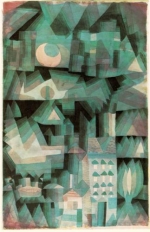Echoes Of History : The Grandkids Go On A Tour Of London :(Year Zero + 20): Section 3

By David Kirtley
- 523 reads
5/7/20
The final straw came when most of the denounced statues had been placed into museums, around the country, and in London in particular. The Anti Racist Statues and Monuments Committee had promised the statues would be preserved after the riots which defaced many of them. The demonstrators had written graffiti on many of them and knocked bits off some of them with sledgehammers. A few had ended up in the water of rivers and docks, some to be fished out later at great expense. True to their word and the government’s will they had been at least partly restored and placed in sections of the main museums, where they were not to be given too much pride of place, or else young protesters turned up in large numbers and started throwing things at them again and even defacing them again.
Museums learned by bitter experience to keep the removed statues out of the way, in small side rooms and off the beaten track areas, where they would not attract too much attention or ‘cause offence’. The Tory Government who were still in power at first began to protect the museums belatedly, as they had briefly tried to do when the statues and monuments were still outside in the streets, with police guards, but the Police tried to diffuse the situations by trying not to send too many officers, because when they sent larger numbers larger crowds of protesters developed and more trouble tended to happen. Where incidents occurred museums shut down to prevent damage and incidents from occurring. The Revolution on the streets was gaining ground and many protesters had by now decided they were not going to give in until every slaveholder statue, and every colonialist, and every Imperialist or racist statue or monument was torn down. Numerous ‘battles of the statues’ took place.
It wasn’t until the Labour Government came in that the police protection for statues was tacitly removed. Incidents of direct action took place against monuments statues and even artefacts which had never even been outside on the streets. Even Ancient civilisations, once tarred with the description of racist or colonialist, or even such epithets as anti female, were not completely immune from the carnage, even though they had existed many centuries before. Eventually after months of revolutionary fervor there were few of the ‘guilty artefacts left intact in the musems. Many revolutionaries had called for the removal of statues from the streets, but had been quite happy to leave them for posterity in the museums, as long as readjusted history plaques had been placed next to them to ensure that their real history was properly reported. But the Revolution had had a power and momentum, a life of its own, which refused to stop just because a government thought it should stop, or the police said they would act to protect statues. Veterans and Right wing groups turned up occasionally to protect history and memory and sometimes fought little battles with the protesters and occasionally with the police instead, but after the Labour Government came in the Government sought to remain popular by using the police against these groups instead of in the protection of statues and monuments and artefacts. They tended to prefer to diffuse incidents and allowed the historical artefacts to be attacked. Many items were hidden in store rooms and the back rooms of museums and came to be kept from the public for their own protection, although even they were not completely safe, as protesters took it upon themselves to find and destroy even those, and even sent spies into or co-opted the employees of the museums to reveal where the artefacts were. And so the cleansing took place, until there were very few of these statues or artefacts still in existence by the end of it all. Grandma knew about all these events because she had been at some of them as the Revolutionary zeal had taken them further and further.
When there were hardly any statues left they turned on the books and records that did not portray history correctly, looking for ever more perfect levels of understanding within the population. Even so the perfect society which was envisioned did not come about. Truly racism became a thing of the past. No one dared to be even slightly racist any more. And history was now only seen in the true perspective. But even so mass unemployment was unfortunately developing and low paid immigrant labour was much relied upon as the Labour Government refused steadfastly to institute any limits to immigration, and were unable to change the economic realities.
Slowly the revolutionary zeal began to pass. Certainly Grandma’s realization that the new society was not going to actually be any better than the old gradually dawned on her, and her ability to look up history had been much curtailed by the simplifications of historical teaching which had come into operation. She began to regret that the history of London and of Britain could no longer be seen and that many works of history had been removed from archives and internet by the Historical Reform Committees.
The Labour Party was eventually voted out again, but it was too late for the tourist industry, and the museums, and the arts, and the historical records. She now had little to show her Grandkids, and she could not give them much detail. She realized they were far more ignorant of history in practice than her own generation who had at least been taught from diverse perspectives.
- Log in to post comments


